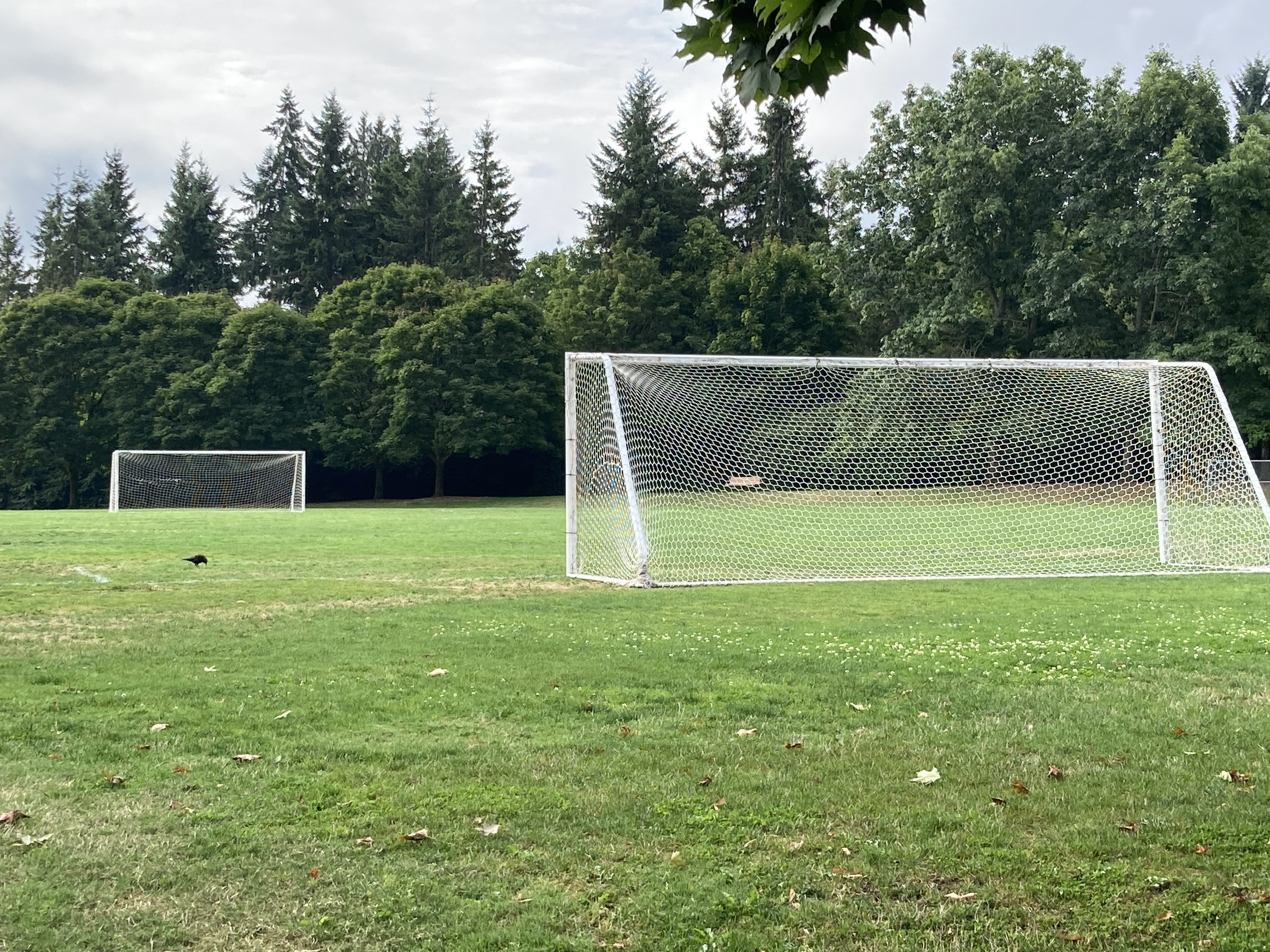By Richard B. Primack
“Who knows what sort of life would result if we attained purity.” Henry David Thoreau in Walden.
For decades, I-90, one of the biggest interstate highways in the USA, cut across Mercer Island, an isolated community of metropolitan Seattle., This created noise and air pollution, and divided the island in two. To remedy this problem, in 1992 the federal government built a half-mile long “lid” over the highway, which was then restored as the Aubrey Davis Park.
The park gives the impression of a deciduous forest to which playing fields, playgrounds, and wooded pathways have been added.

Photo 1. Playing fields are a major use of space in the park.
 |
| Photo 2. Tree-lined paths run along the length of the park and border the playing fields. |
The one indicator of the highway below is a cluster of tall venting chimneys. Otherwise, while walking through the park, there is no sight, sound or smell of the busy highway.

Photo 3. A cluster of vents is the only indication of the highway below.
While these forest areas look natural, they have a very different appearance than the small patches of protected forest scattered around the island. The goal of the restoration was to provide a public amenity rather than restore the original habitat.
 |
| Photo 4. A nearby patch of protected forest has a very different appearance and species composition than the restored park forest. |











